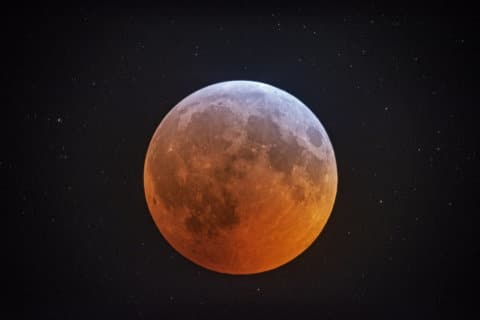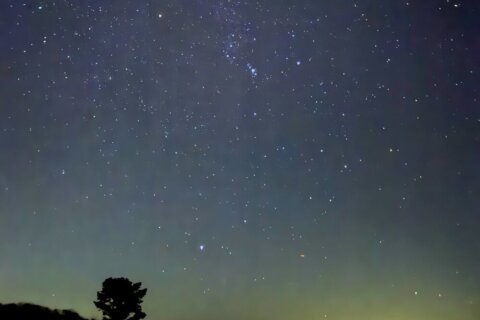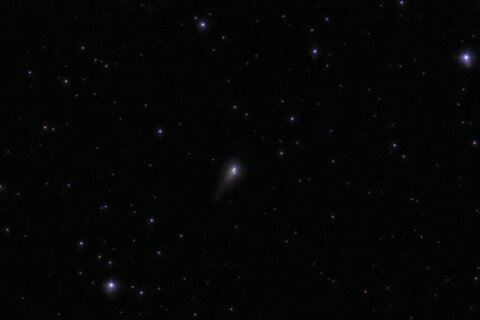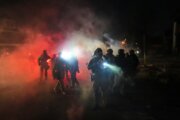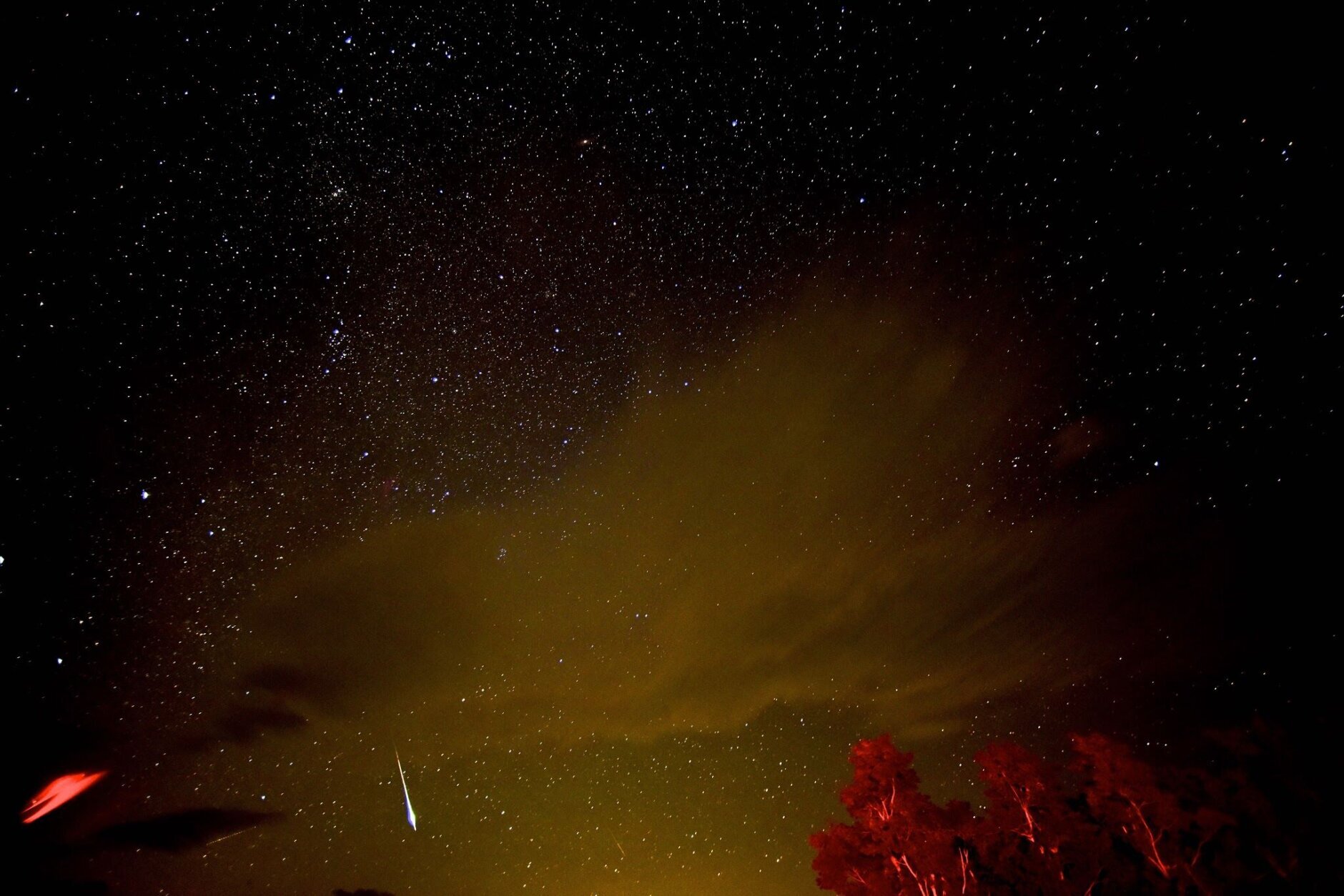
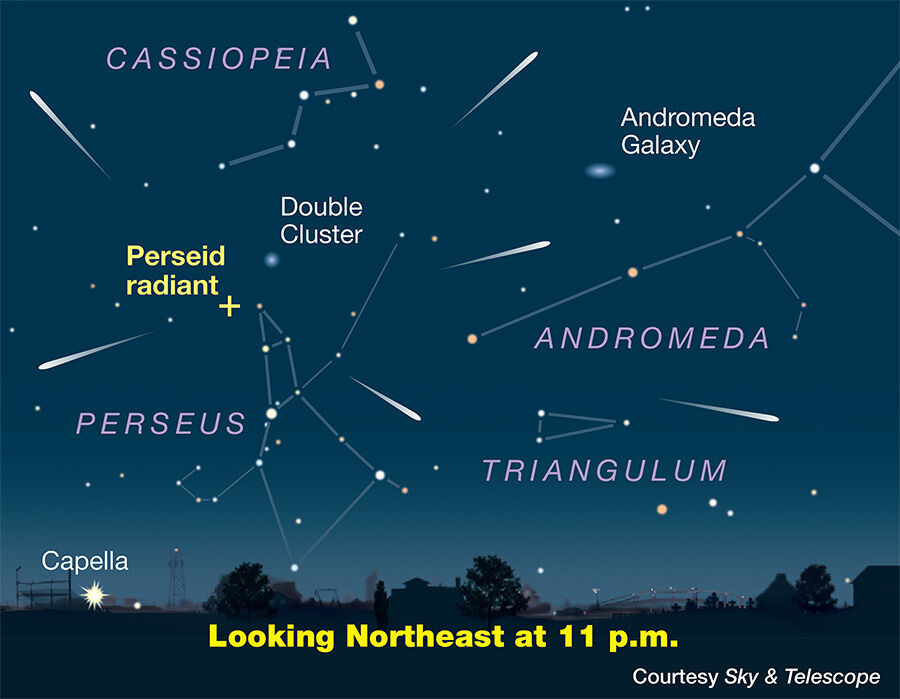
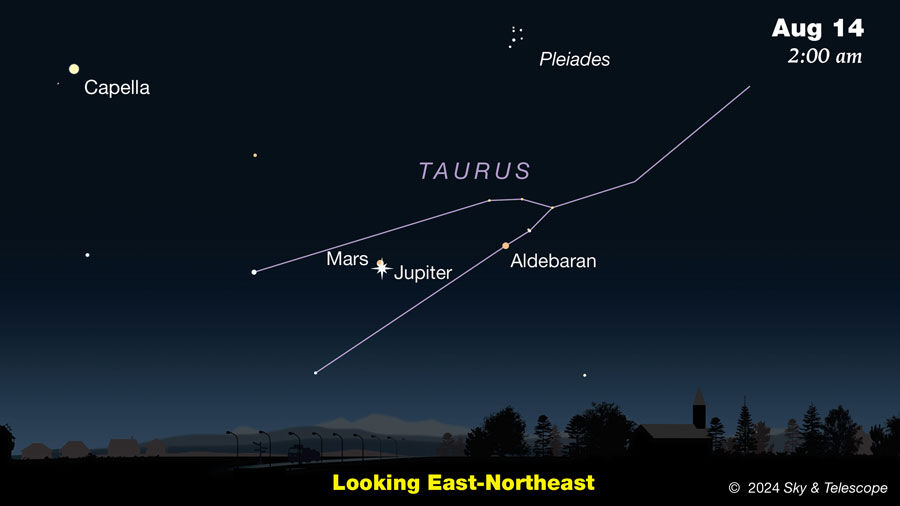
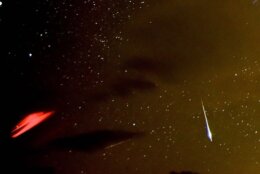
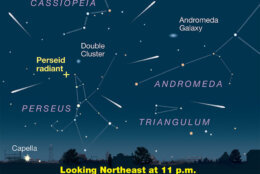
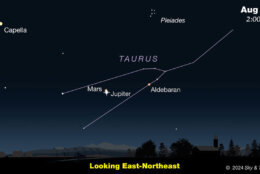
This weekend is a skywatcher’s joy as the peak of the annual Perseid meteor shower occurs Saturday and Sunday nights, accompanied by a stunning late night planetary pairing of Mars and Jupiter.
Aurora
If the Perseid meteor shower and the pairing of Mars and Jupiter isn’t enough to get your celestial juices flowing, the aurora may be visible too, according to the National Oceanic and Atmospheric Administration (NOAA).
“Highlights include continuing R1-R2 (Minor-Moderate) events and likelihood of G2 (Moderate) levels,” NOAA stated.
The aurora may be visible in the D.C. area Saturday and Sunday nights and it is worth taking a look. The D.C. region will experience geomagnetic storms due to solar activity during the past few days.
Your best bet for viewing the aurora is to check WTOP’s weather page for sky conditions, NOAA’s space weather website, along with space-related social media sites, including TamithaSkov on X, EarthSky.org and space.com for updates.
It will be worth taking a look northward from a dark sky site with a clear horizon. You might be able to detect some color in the sky if the aurora is present, but it would likely be low on the Northern horizon. Wide field binoculars will help your search.
Use a camera or smartphone that can take exposures of several seconds — including using “night sky” or “low light” settings if your device has them — of the Northern horizon.
Steady the camera or use a tripod for best image results. The camera may capture the aurora that your eyes did not.
Sunday night star party
A star party will be hosted by Delaware North, Shenandoah National Park’s concessionaire and the Charlottesville Astronomical Society on Sunday at 8:30 p.m.
There will be telescopes set up, weather permitting, to view the night sky at the Big Meadows Area mile 51, outside the Rapidan Camp Gate. Planets, Perseids, the moon, Milky Way and maybe even the aurora comprise the celestial lineup.
The Perseids
The Perseids will have a 44% illuminated moon in the sky to wash out many fainter meteors, until it sets before midnight. At a dark sky site, such as Shenandoah National Park with no moon present, one can expect to up to a 100 meteors per hour at the predicted peak of the shower, which occurs Sunday morning.
The timing of the peak allows for another night, Monday into Tuesday, to see a good number of Perseids.
The Perseids can produce bright meteors called fireballs — meteors brighter than the planet Venus. Even living in the city and suburbs allows skywatchers to see these brighter meteors.
As I write this, D.C.-area weather is forecast to be partly cloudy during the next few days. As long as the sky is not totally clouded, it is worth watching the Perseids on both nights.
It is worthwhile to start watching the sky at 11 p.m. Aug. 11 and 12, and especially the hours before dawn to look for the Perseids. The best place to watch is somewhere free of city lights that offers a clear view of the whole sky, such as Shenandoah National Park.
Being comfortable is key to watching the shower.
Try your luck at photographing the Perseids. It is very easy to do, even with minimal equipment and experience. You can share your Perseid pictures with WTOP on X and Facebook.
Planets and Milky Way
If you are awake at 2 a.m., or before sunrise watching for the Perseids and the aurora, it will be worth your while the next several mornings to see the impressive grouping of Mars and Jupiter in the Eastern sky.
The planets will be at their closest in the early morning hours Wednesday — less than a finger-width at arms length (That is close!). Binoculars will improve the view and your smartphone, with or without zoom, can easily show them among the stars and constellations of the Winter sky.
Due to light pollution, 80% of Americans cannot see the Milky Way, Earth’s home galaxy. At Shenandoah National Park, especially this time of year, the Milky Way is a celestial splendor that can be seen sprawling across the sky from the south to the north.
Many guests to Shenandoah National Park have never seen it, and some are moved to tears when they view the milky band for the first time. The view is best when the moon is not visible.
Try taking a smartphone or camera picture of the Milky Way.
On Sunday at 9 p.m., I will be at Skyland’s Conference Center for my “Let’s Talk About Space” presentation about the famed Mount Wilson Observatory.
There are astronomy events at Shenandoah National Park throughout the season hosted by Delaware North and park rangers. Treat yourself to these events — you will be glad you did.
Here’s to clear skies for this celestial wonderland!
Follow Greg Redfern on Facebook, X and his daily blog to keep up with the latest news in astronomy and space exploration.
Get breaking news and daily headlines delivered to your email inbox by signing up here.
© 2024 WTOP. All Rights Reserved. This website is not intended for users located within the European Economic Area.

